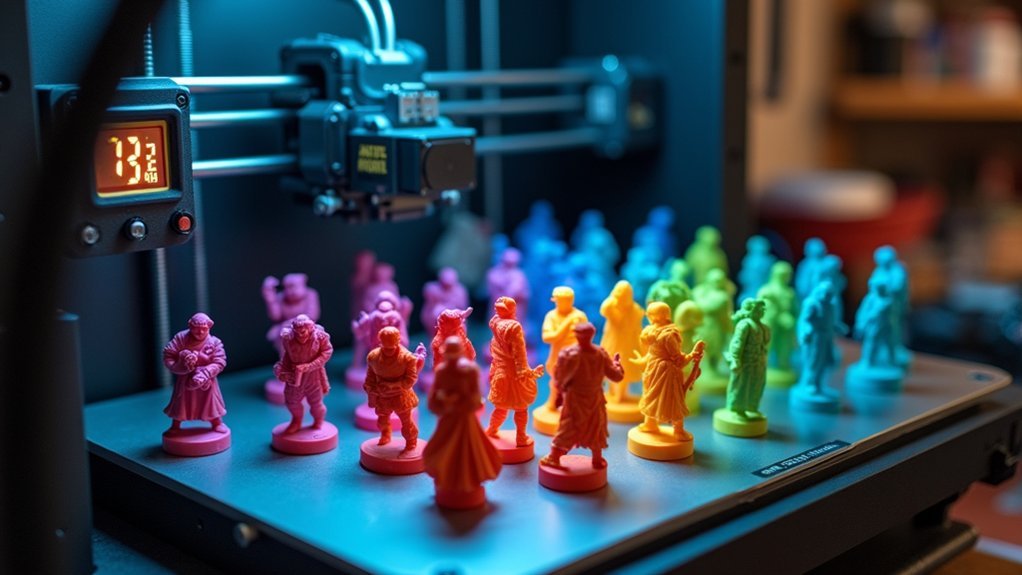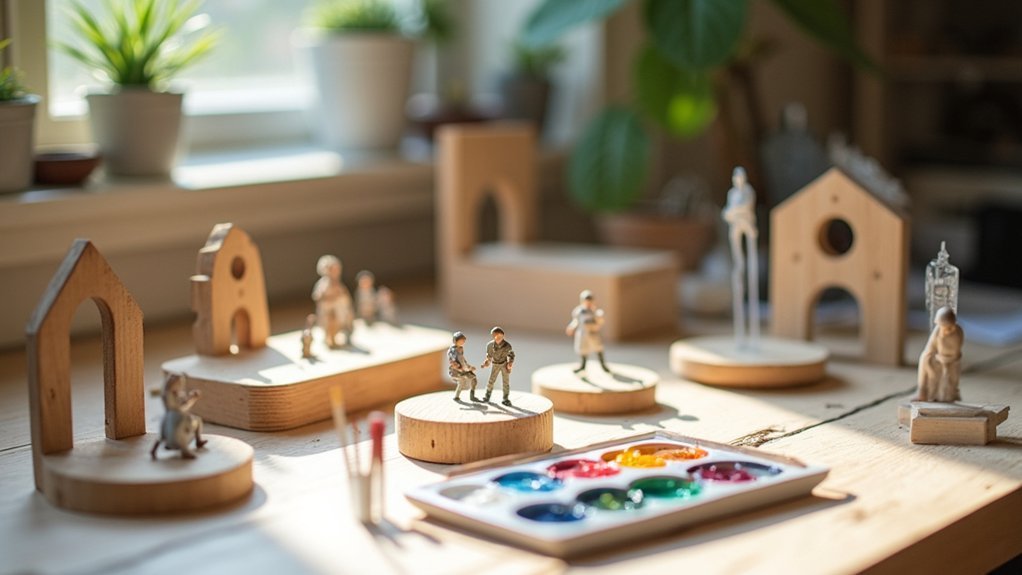You have three excellent bed preparation options for 3D printing success. Manual tramming provides the highest precision through physical adjustment using paper and knobs, though it requires more time and skill. Automatic bed leveling (ABL) uses sensors to detect irregularities and compensates through software adjustments, making it beginner-friendly. Unified bed leveling (UBL) combines both approaches with fine mesh grids up to 15×15 points for maximum accuracy. Each method offers distinct advantages that’ll transform your printing experience.
Manual Bed Tramming: Physical Adjustment for True Bed Alignment

While automatic leveling systems have gained popularity, manual bed tramming remains the gold standard for achieving precise bed alignment in 3D printing.
You’ll physically adjust your print bed’s position so all four corners sit equidistant from the nozzle, creating true horizontal alignment. This process involves using adjustment knobs beneath your bed while sliding thin reference material like paper between the nozzle and bed surface.
You’ll need to home your printer, preheat to operating temperature, then systematically check each corner. Turn the leveling knobs incrementally until you feel slight friction when sliding the paper. The operating temperature is crucial because materials expand when heated, affecting the precise spacing between your nozzle and bed during actual printing conditions.
Since adjustments affect neighboring corners, you’ll repeat this process multiple times. Manual tramming provides direct mechanical alignment without relying on sensors, giving you greater control over first-layer adhesion and print quality.
Automatic Bed Leveling (ABL): Sensor-Based Software Compensation
Although manual tramming provides excellent precision, automatic bed leveling (ABL) revolutionizes the process by using sensors to detect bed irregularities and compensate through software adjustments. Your printer’s firmware collects height readings from multiple points, creating a 3D surface map that enables real-time Z-axis compensation during printing.
| Sensor Type | Detection Method | Best For |
|---|---|---|
| Inductive | Magnetic field changes | Metal beds |
| Capacitive | Capacitance variations | Glass, plastic surfaces |
| Mechanical | Physical contact | Universal compatibility |
| Optical | Light reflection | Non-contact sensing |
ABL notably reduces setup time while improving first layer adhesion and print quality. You’ll experience enhanced reliability as the system automatically recalibrates for thermal expansion or mechanical shifts, making professional-level accuracy accessible regardless of your technical experience. The proximity sensor or switch positioned near the extruder tip probes the build platform at multiple locations to ensure consistent distance measurements between the nozzle and bed surface.
Unified Bed Leveling (UBL): Hybrid Approach Combining Physical and Digital Methods

When standard ABL doesn’t provide sufficient precision for your demanding prints, Unified Bed Leveling (UBL) delivers the ultimate solution by merging physical sensor measurements with advanced digital compensation algorithms.
You’ll benefit from UBL’s finer mesh grids up to 15×15 points, capturing subtle surface deviations that coarser ABL grids miss.
UBL’s hybrid methodology combines physical probing with digital mesh generation, creating detailed heightmaps that dynamically adjust your nozzle’s Z-height during printing.
You can manually edit mesh points for further refinement, balancing automated data with your expertise.
The system requires about 50KB of memory but provides extensive mesh management commands.
You’ll access features like mesh editing, saving multiple profiles, and bed angle compensation, making UBL ideal when you need maximum leveling precision. The G26 command produces a mesh validation pattern that helps you assess print quality and verify your leveling accuracy.
Frequently Asked Questions
How Often Should I Perform Bed Tramming on My 3D Printer?
You should perform bed tramming at least once weekly during normal use. If you change nozzles, experience adhesion problems, or make mechanical adjustments, you’ll need immediate tramming to maintain print quality.
Can I Skip Tramming if My Printer Has Automatic Bed Leveling?
You shouldn’t skip tramming entirely. While automatic bed leveling compensates for minor irregularities, it works best when your bed’s roughly trammed first to minimize extreme angles and guarantee consistent print quality.
What Tools Do I Need for Manual Bed Tramming Besides Adjustment Screws?
You’ll need paper or feeler gauges to check nozzle height, a bent hex wrench for adjustments, cleaning supplies like isopropyl alcohol, and good lighting to see gaps clearly.
Should I Tram the Bed Before Every Print or Only Periodically?
You should tram your bed periodically, not before every print. A well-trammed bed stays aligned through multiple prints. Check weekly or after maintenance instead of constantly adjusting.
How Do I Know When My Bed Tramming Is Accurate Enough?
You’ll know your bed tramming’s accurate enough when the paper test shows consistent slight friction across all corners, your first layer prints uniformly without gaps or over-squishing anywhere.





Leave a Reply